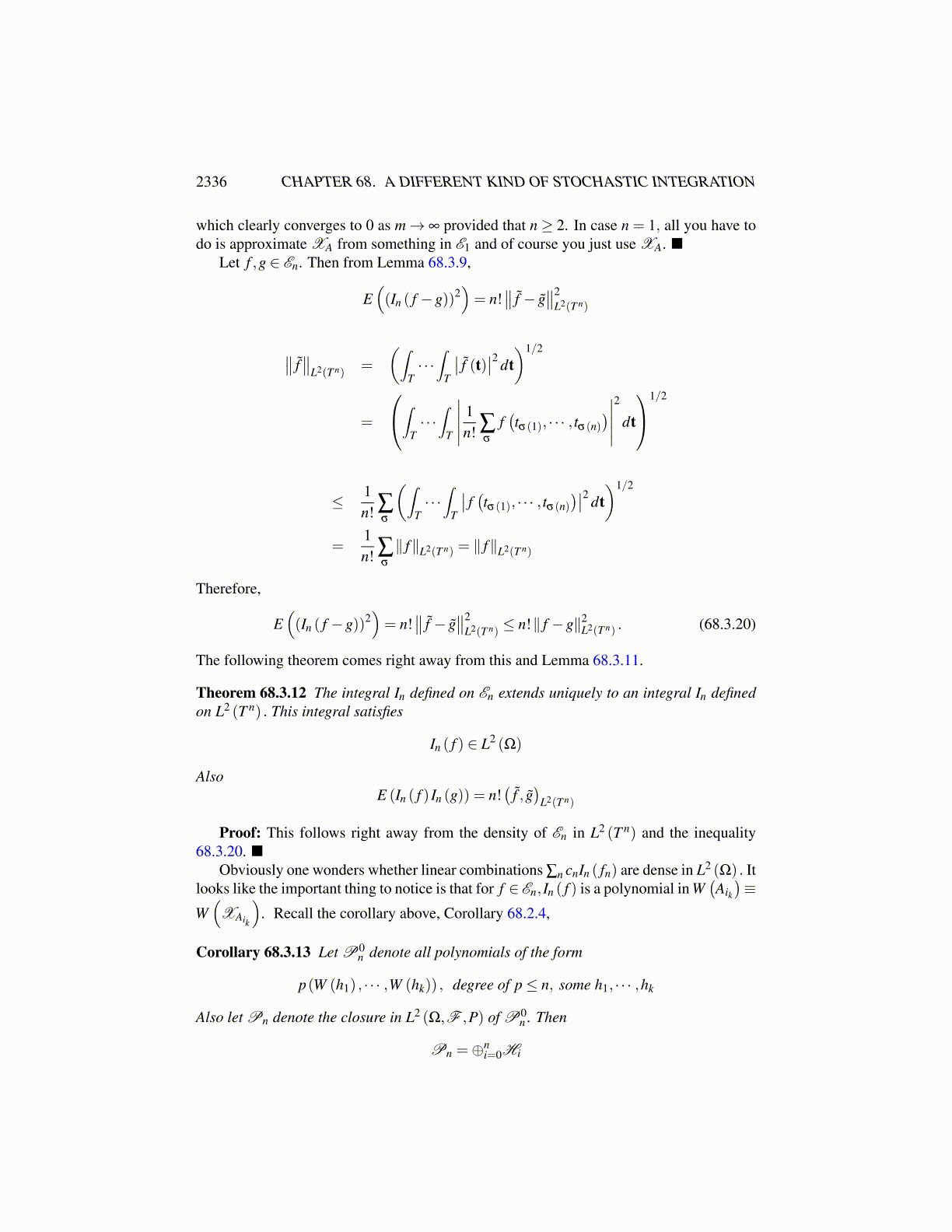
2336 CHAPTER 68. A DIFFERENT KIND OF STOCHASTIC INTEGRATION
Hence the expectation of the product it is of the form E(W(Aik
))(Other terms) = 0. Thus
if n ̸= m, the result is 0 as claimed.An integral has now been defined on the functions of the form
f (t1, · · · , tn)≡∑i
ciXAi1×···×Ain(t1, · · · , tn)
where f = 0 if any ti = t j for i ̸= j. This integral defined on these elementary functions isinteresting because for such functions f ,g
E (In ( f ) Im (g)) ={
0 if n ̸= mn!(
f̃ , g̃)
L2(T n)if n = m
where f̃ is the symmetrization of f . It is desired to extend this integral to L2 (T n). Simplefunctions are always dense in L2 (T ) . Also, there is an easy lemma which can be concludedfor L2 (T n).
Lemma 68.3.10 Let B0 (T ) be the Borel sets having finite measure. Linear combinationsof functions of the form
XA1×···×An
where Ai ∈ B0 (T ) are dense in L2 (T,Bn) where of course Bn refers to the product σ
algebra.
Proof: If you have U = A1× ·· · ×An in T n one can approximate XU∩Rp for Rp ≡(−p, p)n in L2 with linear combinations of sets of the desired form. In fact, you just con-sider XA1∩(−p,p)×···×An(−p,p) and you get equality. Now let K denote the π system of setsof this sort. Let G denote those Borel sets G such that there exists a sequence of linear com-binations of sets of the form XA,A =A1×·· ·×An which converges to XG∩Rp in L2 (T n).Thus G ⊇K .
Let {Gk} be a disjoint sequence of sets of G . Is G≡ ∪kGk ∈ G ? By monotone conver-gence theorem, ∥∥∥∥∥XG∩Rp −
m
∑k=1
XGk∩Rp
∥∥∥∥∥L2(T n)
< ε
provided m is large enough. Now by definition of G there exists Lk a linear combination ofthese special sets such that ∥∥XGk∩Rp −Lk
∥∥L2(T n)
<ε
mIt follows that ∥∥∥∥∥XG∩Rp −
m
∑k=1
Lk
∥∥∥∥∥L2
≤
∥∥∥∥∥XG∩Rp −m
∑k=1
XGk∩Rp
∥∥∥∥∥L2
+
∥∥∥∥∥ m
∑k=1
XGk∩Rp −m
∑k=1
Lk
∥∥∥∥∥ < ε + ε